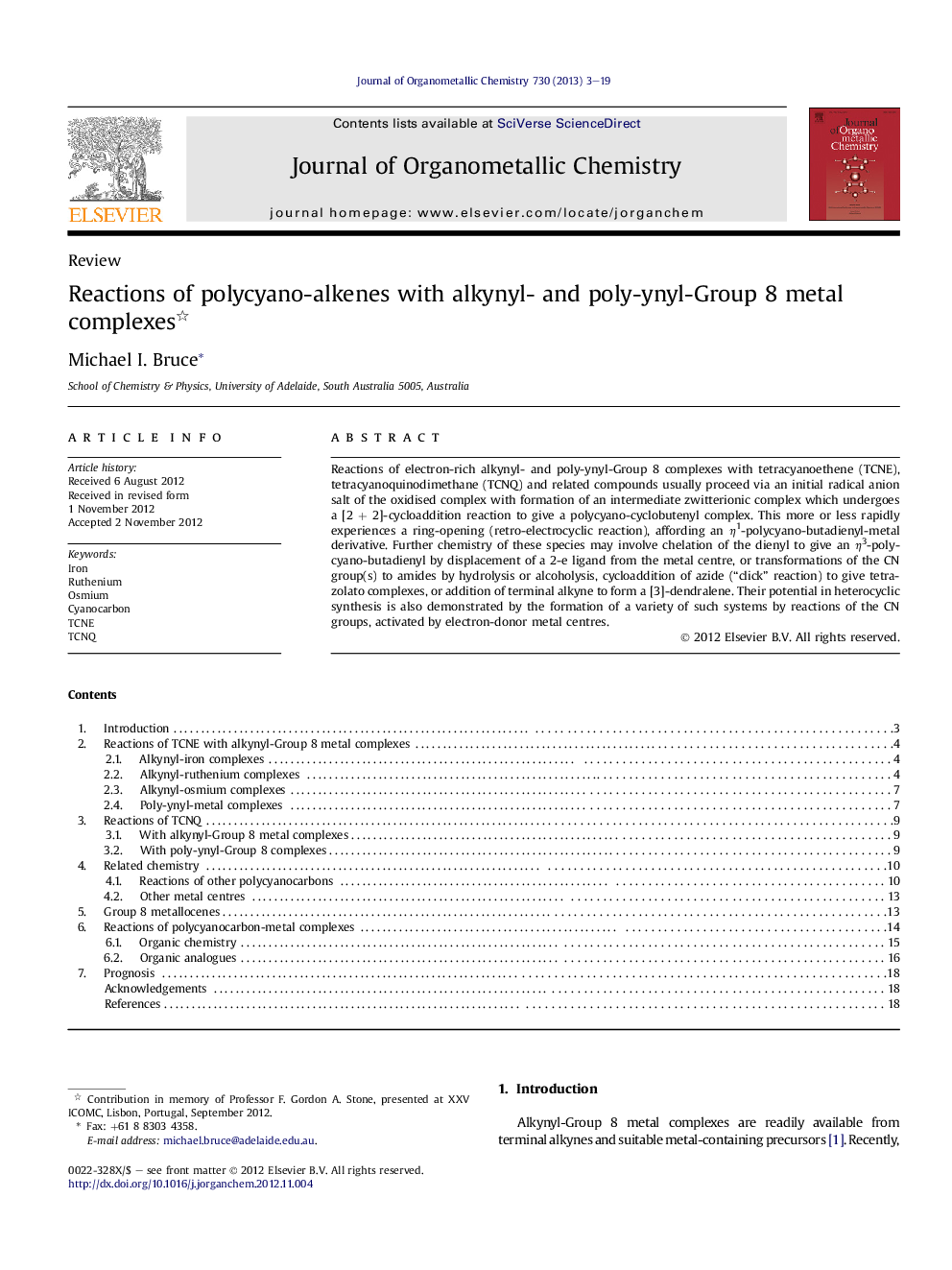| Article ID | Journal | Published Year | Pages | File Type |
|---|---|---|---|---|
| 1322813 | Journal of Organometallic Chemistry | 2013 | 17 Pages |
Reactions of electron-rich alkynyl- and poly-ynyl-Group 8 complexes with tetracyanoethene (TCNE), tetracyanoquinodimethane (TCNQ) and related compounds usually proceed via an initial radical anion salt of the oxidised complex with formation of an intermediate zwitterionic complex which undergoes a [2 + 2]-cycloaddition reaction to give a polycyano-cyclobutenyl complex. This more or less rapidly experiences a ring-opening (retro-electrocyclic reaction), affording an η1-polycyano-butadienyl-metal derivative. Further chemistry of these species may involve chelation of the dienyl to give an η3-polycyano-butadienyl by displacement of a 2-e ligand from the metal centre, or transformations of the CN group(s) to amides by hydrolysis or alcoholysis, cycloaddition of azide (“click” reaction) to give tetrazolato complexes, or addition of terminal alkyne to form a [3]-dendralene. Their potential in heterocyclic synthesis is also demonstrated by the formation of a variety of such systems by reactions of the CN groups, activated by electron-donor metal centres.
Graphical abstractReactions of electron-rich alkynyl- and poly-ynyl-Group 8 complexes with tetracyanoethene (TCNE), tetracyanoquinodimethane (TCNQ) and related compounds proceed via cycloaddition and ring-opening reactions to give η1-polycyano-butadienyl-metal derivatives. Further reactions of these compounds occur by hydrolysis or alcoholysis, cycloaddition of azide, or addition of terminal alkynes, and as reagents in heterocyclic synthesis.Figure optionsDownload full-size imageDownload as PowerPoint slideHighlights► Reactions of transition metal alkynyls with unsaturated polycyanocarbons are described. ► Cycloaddition and ring-opening reactions afford tetracyanobutadienyl complexes. ► Further reactions by cycloaddition or attack on CN gives heterocycles.
